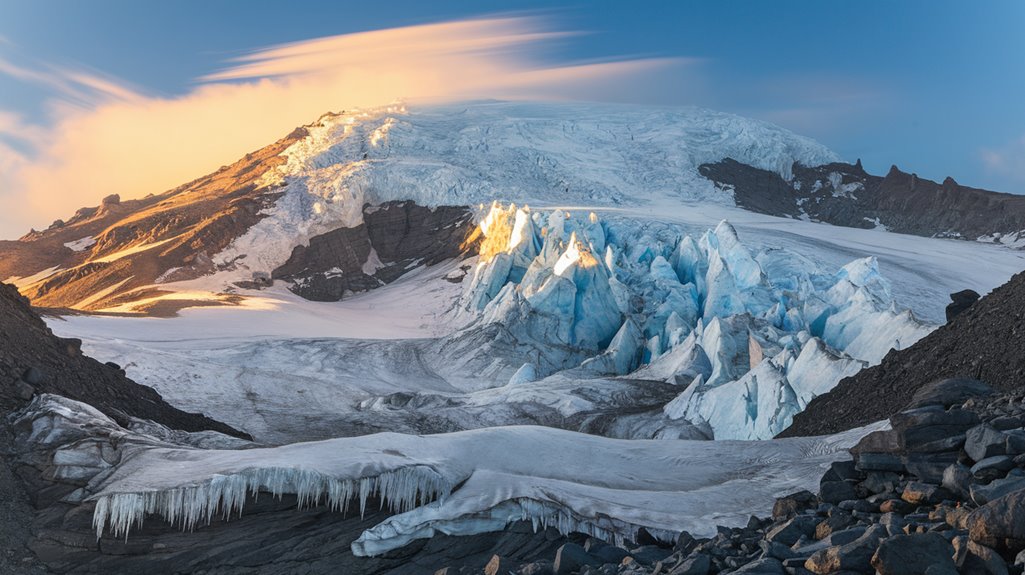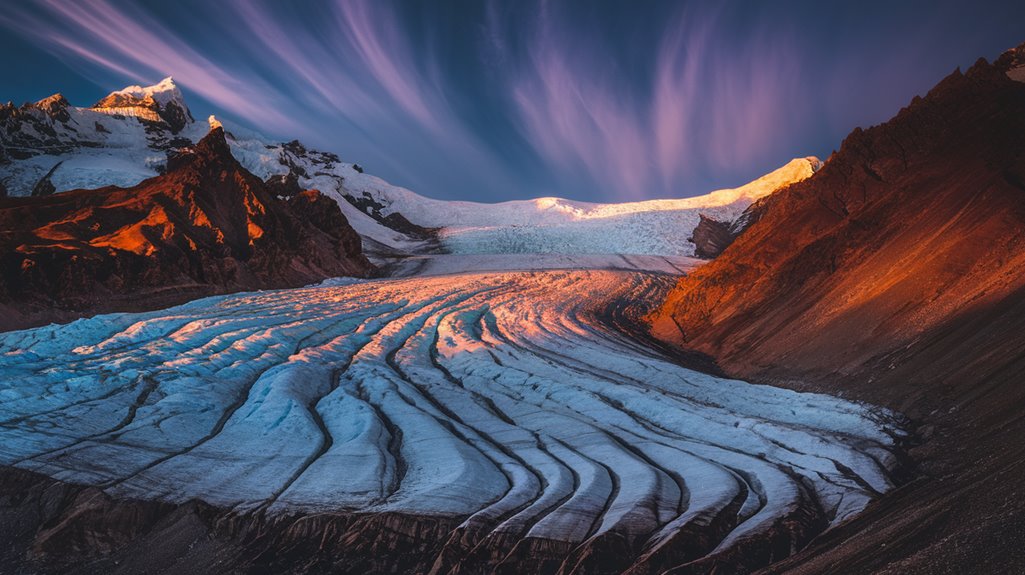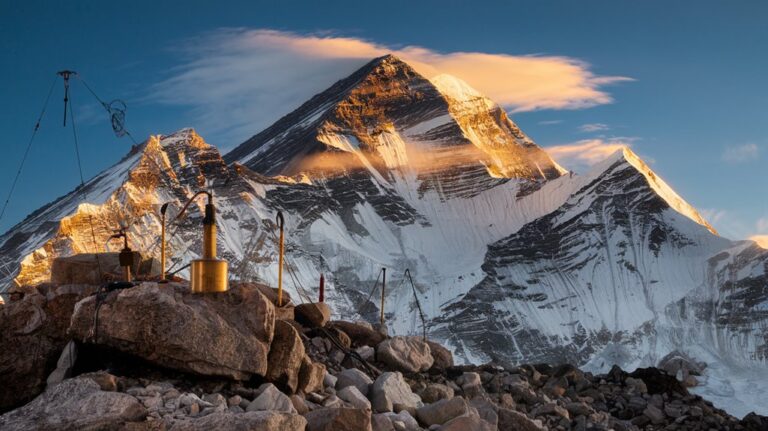There Are Glaciers in the Tropics
When you think of glaciers, you'll probably picture the frozen landscapes of Alaska or Antarctica. But here's something unexpected: massive ice formations exist right near the Earth's equator. You'll find these tropical glaciers clinging to the peaks of towering mountains in places like Peru and Indonesia, where they've carved out a remarkable niche against all odds. Yet these ancient ice towers are vanishing at an alarming rate, and their disappearance tells a story you need to know.
The Surprising World of Tropical Ice
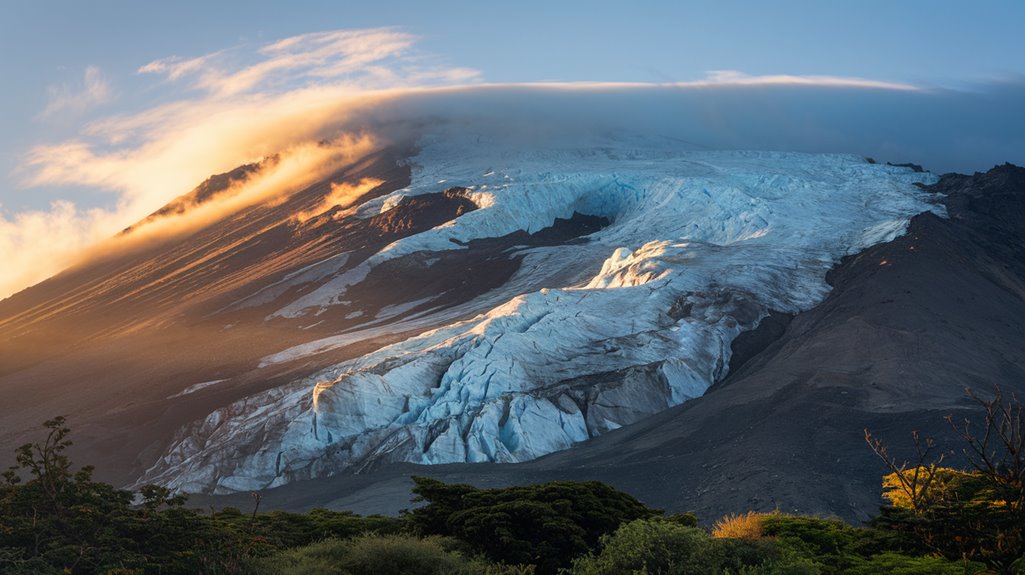
When you think of glaciers, you probably imagine the frozen landscapes of Antarctica or Greenland – not the warm, humid regions near the equator. Yet tropical glaciers do exist, forming high in mountain ranges where temperatures drop considerably with elevation. For every 1,000 feet you climb, the temperature falls about three degrees Fahrenheit, creating conditions cold enough for snow to accumulate and transform into ice.
You'll find these remarkable ice masses primarily in the Andes, where they're crucial to tropical ecosystems and serve as sensitive climate indicators. The Andes mountains house more than 95% of the world's tropical glacier ice, with Peru claiming the lion's share at 70%. Unfortunately, these glaciers have lost 40-50% of mass in less than four decades. Recent research reveals these glaciers have now reached their smallest size in over 11,700 years.
These glaciers aren't just scientific curiosities – they provide essential water resources to millions of people living in these regions.
Why High Mountains Can Harbor Glaciers Near the Equator
The presence of glaciers near the equator might seem impossible, but understanding the relationship between altitude and temperature explains this fascinating phenomenon. As you climb higher into the mountains, you'll experience a dramatic temperature drop of about 6-7°C per kilometer. This altitude effect makes glacier formation possible even in tropical regions.
When warm air rises in tropical mountains, it expands and cools, though this cooling is partially offset by heat released from water vapor condensation.
You'll find these unique conditions in places like the Andes, Mount Kenya, and Indonesia's Puncak Jaya, where high elevations provide the perfect environment for snow accumulation and ice formation. Research shows that these tropical glaciers respond to greenhouse gas concentrations just like their polar counterparts. These glaciers serve as vital water sources for approximately one-sixth of the world's population.
The interplay between altitude and seasonal precipitation patterns guarantees these glaciers can persist, despite their location near the equator.
The Rapid Disappearance of These Unique Ice Formations
Since the 1970s, tropical glaciers have faced an unprecedented crisis of rapid disappearance, with some regions losing up to 93% of their ice coverage.
You'll find this climate impact most evident in places like Indonesia's Eternity Glaciers, which scientists predict will vanish entirely by 2026.
The glacier melting crisis manifests in several alarming ways:
- Exposed dark rock absorbs more heat, creating a devastating feedback loop
- Rain now falls instead of snow at high altitudes
- Local communities lose critical water sources during dry seasons
What you're witnessing isn't just a local phenomenon – it's part of a global pattern.
The summer of 2023 was the hottest on record, making the situation even more dire for these vulnerable ice formations.
The Quelccaya Ice Cap has lost 46% of its surface area since 1976, and NASA's Landsat imagery confirms that tropical glaciers are retreating universally, threatening both ecosystems and human communities.
Local populations depend heavily on glacier melt for their daily activities and survival.
Water Towers of the Tropics: Their Critical Role
Beyond their majestic appearance, tropical glaciers serve as natural "water towers" that sustain life across vast regions of our planet.
The National Water Authority's Strategic Actions Program is actively monitoring these vital water sources to ensure sustainable management.
You'll find these essential ice formations providing water to over 1.9 billion people worldwide, with southeast Asian glaciers alone supporting 1.4 billion individuals.
Mountain glaciers are currently melting at a staggering rate of 227 gigatonnes yearly, threatening water security across multiple continents.
As climate change impacts intensify, you're witnessing a significant challenge in water resource management.
These glaciers regulate water flow during dry seasons, but they're rapidly retreating.
In Peru, where 71% of South America's tropical glaciers exist, you've already seen a 53% loss in the past five decades.
This decline affects everything from irrigation to livestock, particularly in regions like the Indus basin, where communities depend heavily on glacier-fed rivers for their daily water needs.
What Science Reveals About Their Ancient History
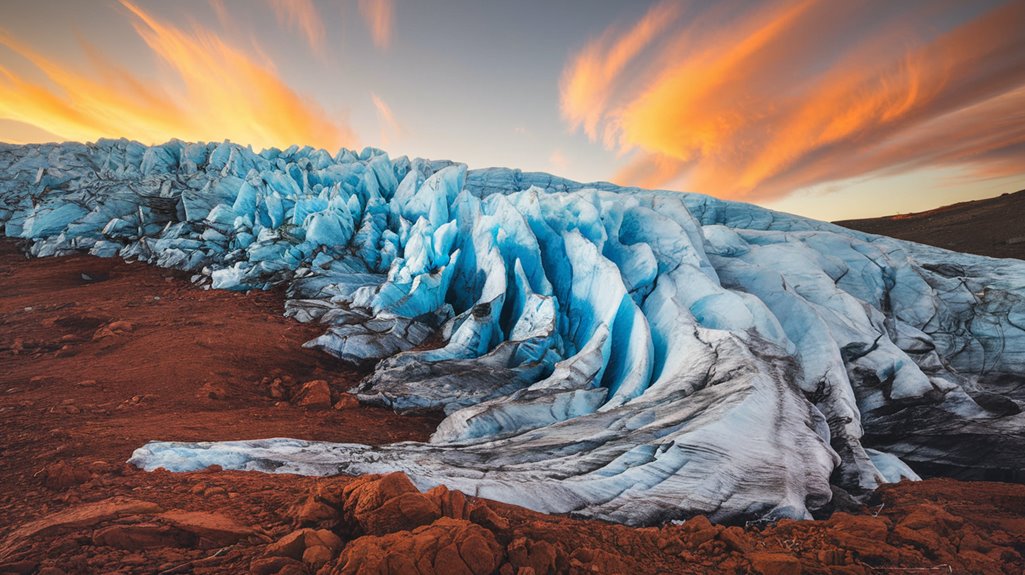
Looking back through Earth's history, tropical glaciers tell a fascinating story of climate evolution that stretches to the early Holocene epoch. Scientists have uncovered this glacial history through cosmic-ray exposure dating, ice cores, and bedrock analysis.
You'll find that tropical glaciers reached their peak between 29,000-21,000 years ago during the last ice age. Recent research by Andrew Gorin and colleagues shows that South American glaciers are experiencing unprecedented retreat. The scientists used beryllium-10 isotopes to precisely date when these ancient glaciers began retreating.
When studying ancient climates, researchers discovered:
- Glaciers were smaller in the early Holocene due to warmer summers
- Today's glaciers are more diminished than at any time since that period
- Glacial retreat occurred simultaneously across tropical Africa and South America about 20,000 years ago
These findings reveal a synchronized pattern of cooling and warming across tropical regions, making today's rapid glacier loss even more significant for understanding our climate's future.

